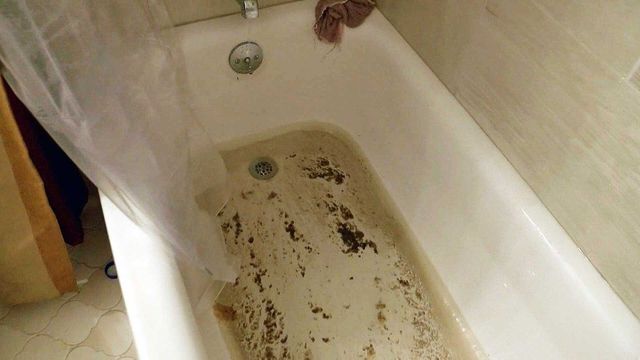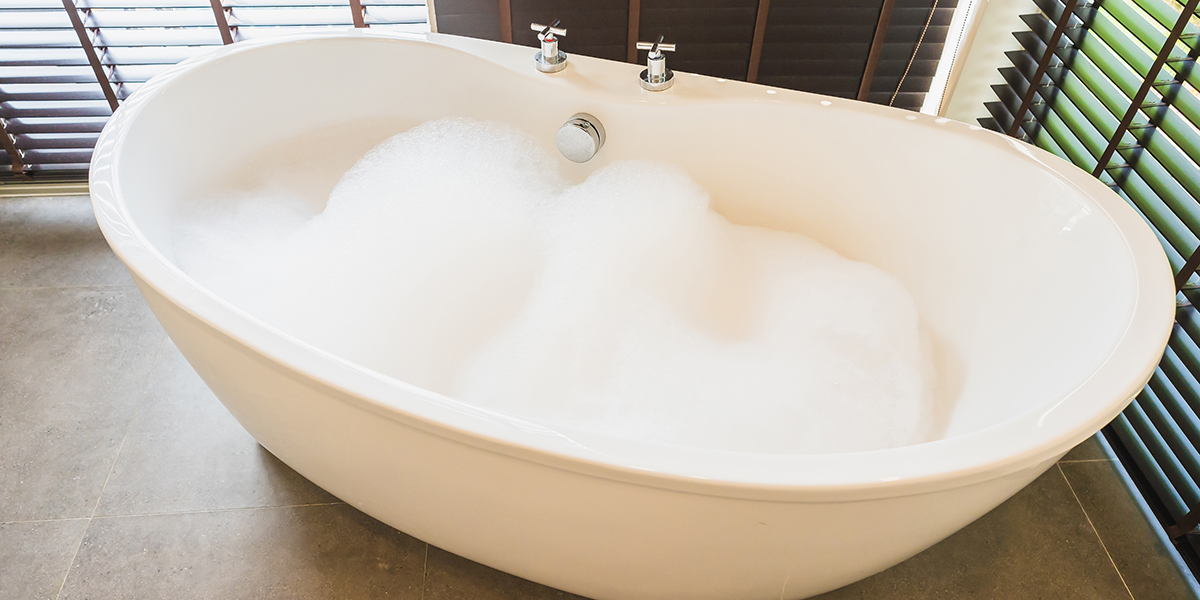Revealing the Causes of Drainage in the Bathtub
Revealing the Causes of Drainage in the Bathtub
Blog Article
On this page on the next paragraphs you can locate more decent insight around What To Do If Sewage Starts Backing Up Into the Shower.

Sewage backup in the bath tub can be a distressing and unhygienic trouble for any kind of house owner. Not only is it bothersome, but it likewise poses significant health and wellness dangers and suggests underlying issues with the plumbing system. Understanding why sewage is turning up via the bath tub is crucial for taking appropriate action to address the trouble effectively.
Introduction to the Issue
Typical Factors for Sewage Backup
Clogs in the Sewer Line
Among the most typical sources of sewage backup is an obstruction in the sewer line. This can occur because of the accumulation of particles, oil, or foreign items in the pipelines, avoiding appropriate circulation and creating sewer to back up into your bath tub.
Tree Origin Breach
Tree roots looking for moisture and nutrients can infiltrate drain lines with small cracks or joints. Over time, these origins can grow and increase, creating significant damage to the pipes and leading to sewer backup problems.
Comprehending the Issue
When sewage starts backing up into the bath tub, it's a clear sign of a problem with the water drainage system. The wastewater that must be streaming away from your home is instead discovering its way back into your space, which can result in considerable damage and health hazards.
Potential Reasons
A number of variables can contribute to sewer backup in the tub. From clogs in the drain line to concerns with the plumbing framework, determining the root cause is important for finding a service.
Aging Facilities
Older homes might have outdated plumbing systems that are a lot more susceptible to deterioration, cracks, and wear and tear. As pipes age, they end up being a lot more vulnerable to leakages and clogs, boosting the possibility of sewer back-up cases.
Heavy Rainfall or Flooding
Throughout durations of heavy rainfall or flooding, the sewer system might come to be overloaded with excess water, creating back-ups and overflows. This can result in sewage supporting into tubs and other components inside the home.
Signs of Sewer Backup
Foul Odors
Undesirable smells emanating from drains pipes or components, particularly in the restroom, might suggest sewage backup problems. These smells are typically solid and persistent, indicating a trouble that calls for instant focus.
Slow Draining Fixtures
Bath tubs, sinks, and commodes that drain slowly or not at all could be experiencing sewer backup. If numerous components are affected at the same time, it's most likely that the concern stems from a common point, such as the primary sewage system line.
Gurgling Sounds
Unusual gurgling or bubbling noises coming from drains pipes when water is running in other places in the house are indicative of air entraped in the plumbing system. This air buildup can arise from sewer back-up and should be explored without delay.
Health And Wellness Threats Connected With Sewer Backup
Contamination of Water
Sewage back-up can pollute the water system in your home, presenting a severe health and wellness risk to you and your family. Direct exposure to infected water can cause gastrointestinal problems, skin infections, and other ailments.
Mold Growth
Dampness from sewer back-up can develop ideal conditions for mold and mildew growth in your home. Mold and mildew spores can aggravate respiratory problems and trigger allergies in sensitive individuals, making timely cleanup vital.
Spread of Illness
Sewage has damaging microorganisms, viruses, and bloodsuckers that can create a variety of diseases, including liver disease, cholera, and gastroenteritis. Coming into contact with sewer or polluted surfaces puts you at risk of infection.
Tidying up After Sewer Back-up
Sanitation Procedures
Completely sanitize and sanitize influenced areas after sewage back-up to get rid of hazardous microorganisms and avoid mold development. Usage proper cleansing products and safety gear to ensure safe and reliable clean-up.
Reconstruction of Influenced Areas
Repair any kind of damage to flooring, walls, or components brought on by sewage back-up. Depending on the extent of the damages, you might require to change carpeting, drywall, or various other products to recover your home to its pre-loss condition.
Immediate Actions to Take
Switching Off Water Supply
In the event of sewage backup, it's essential to shut off the water to prevent additional contamination and damage. Find the major water shutoff valve in your home and shut it off up until the issue can be dealt with.
Calling an Expert Plumber
Managing sewage back-up is not a do it yourself job. Contact a certified plumber with experience in handling sewage-related concerns to evaluate the situation and perform needed repairs or clean-ups.
Preventing Contact with Infected Water
Up until the sewage back-up is dealt with, avoid contact with infected water to stop the spread of microorganisms and virus. Use safety gear if you need to remain in the afflicted area and wash your hands completely afterward.
Safety nets
Routine Maintenance of Sewage System Lines
Schedule normal inspections and upkeep of your sewer lines to determine and attend to prospective concerns prior to they intensify into significant issues. This can consist of cleaning particles, examining for tree origin breach, and fixing any kind of damaged pipelines.
Setting Up Backwater Shutoffs
Consider setting up bayou valves in your plumbing system to avoid sewage from receding right into your home throughout periods of heavy rainfall or flooding. These shutoffs automatically close when water starts backing up, safeguarding your home from contamination.
Appropriate Disposal of Household Waste
Avoid flushing anything aside from toilet tissue and human waste down the bathroom to stop blockages and obstructions in the drain line. Dispose of grease, oil, and other home chemicals properly to reduce the risk of plumbing issues.
Why Is Water Backing Up in My Bathtub When I Flush My Toilet?
What to do about a sewer line clog
First, don’t bother with plunging. No amount of plunging will dislodge the clog in a sewer line. The clog is too far away. Plungers are for clogs in the toilet itself, not the sewer line. Plus, the most likely causes of a sewer clog are:
Tree roots Flushed toys or feminine products Grease buildup Those items don’t move easily. And in the case of tree roots, the roots need to be cut out of the pipe and the pipe will need to be repaired.
You’ll need a closet auger. A closet auger is a type of plumber’s snake with a protective cover to keep from scratching the delicate porcelain toilet. If the clog is further down, you may need to remove the toilet or use one of your cleanouts to get to the clog.
We also recommend doing a video inspection of the drain to ensure that the cause of the clog has been completely removed. Otherwise, you could have the same problem again in a few days or weeks.
https://mspplumbingheatingair.com/blog/why-is-water-backing-up-in-my-bathtub-when-i-flush-my-toilet

I have been very interested by Water Coming up Bathtub Drain and I am praying you enjoyed reading my blog posting. Sharing is good. You just don't know, you could be doing someone a favor. We cherish reading our article about What To Do If Sewage Starts Backing Up Into the Shower.
Need Help? Hire Us Now!
Report this page